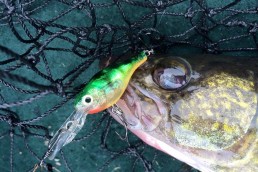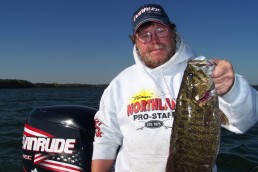August Walleyes: Take your Pick
SHARE THIS POST
Walleyes can be caught now with a variety of techniques
Throughout much of the year, chasing old marble eyes often requires a little adaptation on the angler’s part. To further complicate things, the bodies of water in northern Minnesota are quite varied. We have extremely deep, oligotrophic lakes, some shallow eutrophic lakes and, of course, mesotrophic lakes in between. All can contain populations of walleyes, often exhibiting behavioral differences at a given time. However, there are times when technique and presentation become less crucial and you can catch them a variety of ways regardless of the type of lake. August is one of those times.
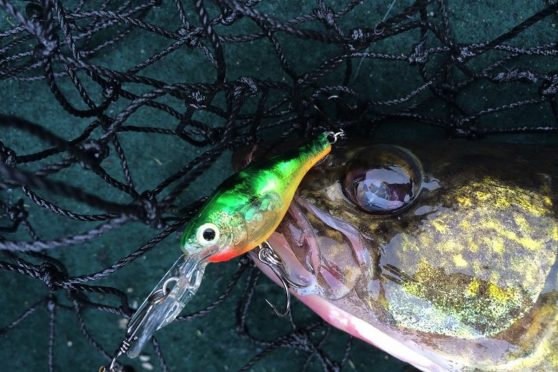
Sometimes when I’m working on my “What’s Up” column, I can get a little shortsighted. It’s easy to forget this diversity of water here and become focused on the nearby lakes that I fish frequently. To avoid this, I figured I’d reach out to someone who fishes some water bodies that are quite different than ones I spend the majority of my time on. Especially considering the topic this month, I really wanted to see if it applied universally to our region.
So, out went a message to 30-year guiding veteran Greg Clusiau of Justin Bailey Fishing & Guide Service. I’m not sure if there are many who have more time or experience on the multitude of lakes in and around the Grand Rapids area. So Greg seemed a logical starting point. As it turns out, it was also the finishing point since he messaged back almost immediately from his boat while fishing for walleyes—big surprise, huh?
To satisfy my curiosity and to see how Greg’s walleye-attack plan compared to mine, I asked him the simple question: What are three easy techniques for August walleyes in your neck of the woods?
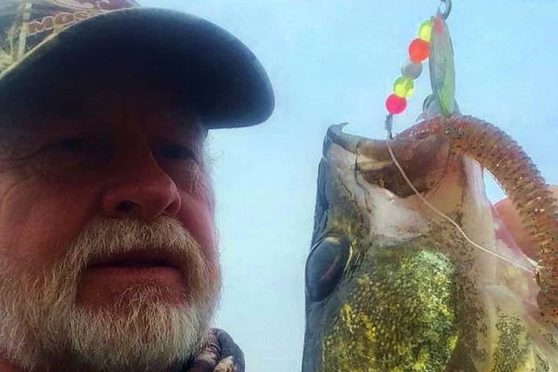
The bobber bite
“It doesn’t get much better than this, as it’s very relaxing and equally productive,” Clusiau said. “All one has to do is find a shallow, rocky area, especially when the wind is blowing into it, drop anchor in deeper water, and cast your floats into ‘the zone.’ More times than not, you’ll be fishing shallow enough that a slip bobber isn’t even required. Just fasten on a float, about 4 to 5 feet above a small jig tipped with a lively leech and wait for the fun to begin. I prefer using a jig with a larger-than-normal hook gap, as it makes it a lot easier in hooking fish.
Are you enjoying this post?
You can be among the first to get the latest info on where to go, what to use and how to use it!
Bouncers and blades
“This technique can put a lot of fish in the boat in short order once you get it “dialed in,” and it’s quite deadly and easy to do,” Greg says. “If you’re seeing a lot of fish in the 20- to 25-foot depths and don’t want to go the painstakingly slow method of live-bait rigging, tie on a bottom bouncer and get to work. I prefer 2 1/2- to 3-ounce bouncers for this depth. The more vertical you keep your presentation, the better. Using the outboard, I back-troll at 1 1/2 mph. Electric trolling motors can be worked even slower. I use Northland Tackle’s Baitfish Spinner Harnesses. The two-hook ’crawler harness works very well, especially when you pinch off the tail end of the ’crawler about 1 inch from the last hook. This makes it a lot easier in hooking fish.”
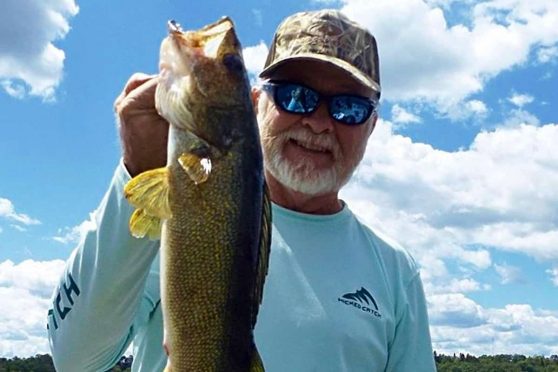
Leadcore trolling
“This presentation is becoming more popular with each and every season,” Clusiau says. “A lot of anglers are doing it and you can’t blame them, as it’s extremely productive. If you’re spotting a lot of fish in 25-35 feet and want to speed up the fish- catching process, leadcore trolling is the way to go. This technique allows one to troll small crankbaits, for example, a number 5 Rapala Shad Rap, and at any depth you’re seeing fish.
“Late summer, like now in August, may have the fish preferring larger baits, like 7s, 9s, and larger. Leadcore line changes color every 10 yards, allowing you to keep track of how deep you are trolling. It has an average sink rate of 5 feet per color, but not all brands are the same so it may take a little time in figuring it all out. But when you do, it’s all to easy and a lot of fun.”
It’s interesting that not only do Greg’s techniques pretty much echo mine, but so do the reasoning behind them. Bobber fishing is relaxing, yet effective, and is ideal for larger groups and kids. Whether you call it bouncers and blades, bottom bouncing ’crawlers or pulling spinners, these are hard to beat for covering water and are really pretty simple with a little trial and error.
The main difference between our list of three techniques is that mine would include jigging—specifically vegetation with plastic-tipped jigs. This can replace the leadcore trolling. Do I think this is a better option than leadcore for putting August walleyes in the boat? Probably not, but I’m going to use this discrepancy as incentive to go see Greg for proof via an on-the-water lesson. Seriously though, it’s more likely a result of my atrocious leadcore skill set combined with being a “cast-to-target bass fisherman” and leaning toward catching walleyes the way I like to. But that’s kind of the point of this article—being able to catch August walleyes the way you like. So take your pick.
MWO
SHARE THIS POST
Did you enjoy this post?
You can be among the first to get the latest info on where to go, what to use and how to use it!
Scott Walsh
MidWest Outdoors works with more than 200 outdoor experts each year, who contribute articles based on their areas of expertise. MidWest Outdoors magazine offers more fishing and hunting articles than any other publication!
